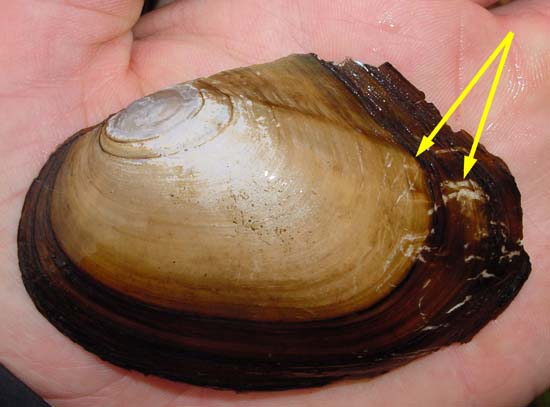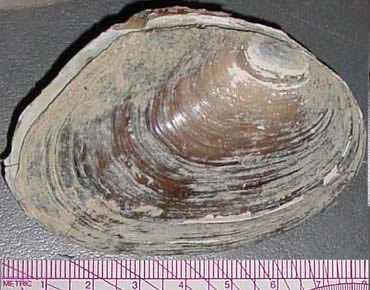
THE XERCES SOCIETY FOR INVERTEBRATE CONSERVATION Aquatic Invertebrates in Pacific Northwest Freshwater Wetlands |
| Identify taxa |
|
|
Anodonta species The genus Anodonta includes 5 out of the 7 species of freshwater mussels native to the Pacific Northwest. The Anodonta are fast-growing generalist species. They are more tolerant of lower dissolved oxygen levels than other native mussel species. They prefer softer substrates (sand and silt) characteristic of permanently flooded wetlands, lakes, and reservoirs. Three species of Anodonta have been found in the Columbia slough of Portland, Oregon. Currently, five species of Anodonta are thought to be living in the Pacific Northwest. One of these species, Anodonta beringiana, is only found in the far North, including Alaska, the Yukon, and British Columbia. Current work on the genus Anodonta by Karen Mock and her graduate student Jer Pin Chong at Utah State University suggests that there is considerable genetic evidence to support splitting the genus Anodonta into three separate genera. The floaters have a thinner, and usually lighter colored shell than the other Northwest genera. Their thin shells would not be able to withstand the rough conditions that other genera of mussels are adapted to. They also have a light colored interior, are generally rounded, and don't have a prominent ridge on their shell. Much of the information on the pages about Anodonta spp. was adapted from The Pacific Northwest Native Freshwater Mussel Workgroup's publication, "Freshwater Mussels of the Pacific Northwest." This publication can be accessed online in pdf form (outside link). |
|
| Key to Anodonta spp. |
| Anodonta californiensis (California floater) - the posterior part of the shell (the longer of the two sides from the hinge out) is higher than the anterior part, giving the overall shell a more circular appearance (not oblong); shell is similar in thickness to that of other Anodonta species. This species is the most threatened of the genus. | |||
| Anodonta nuttalliana (winged floater) - the posterior part of the shell extends out as a long flange and is much higher than the anterior part, giving the overall shell a more circular appearance (not oblong); shell is thinner than that of other Anodonta species. |
 |
||
| Anodonta oregonensis (Oregon floater) - the posterior part of the shell is not dramatically higher than the anterior part; the shell is rounded on the ventral (opposite the hinge) margin; it is swollen most in the middle, below the umbo, not just along the posterior ridge |
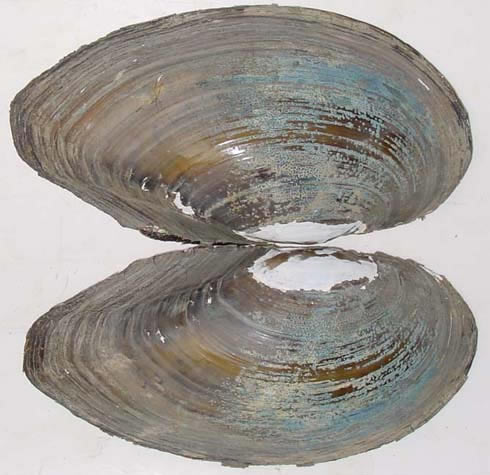 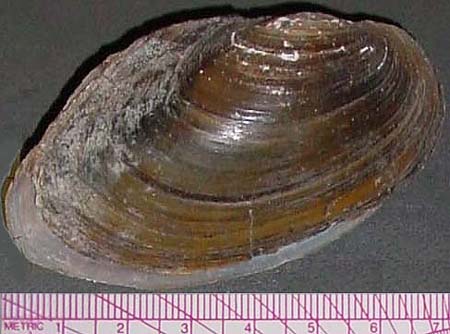 |
||
| Anodonta kennerlyi (western floater) - the posterior part of the shell is not dramatically higher than the anterior part; the shell may curve in very slightly along the ventral edge because it is swollen more along the posterior ridge than in the middle and that posterior side may have a slightly raised ridge |
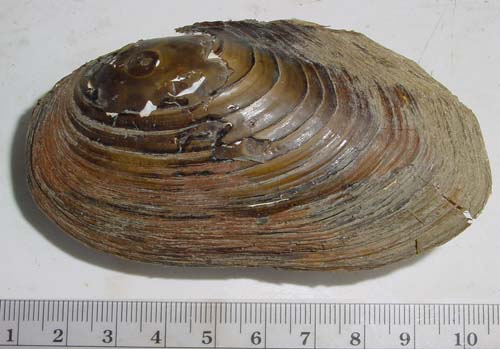 |
||
Anodonta kennerlyi (western floater) |
|
© 2007 Xerces Society
Contact info@xerces.org

